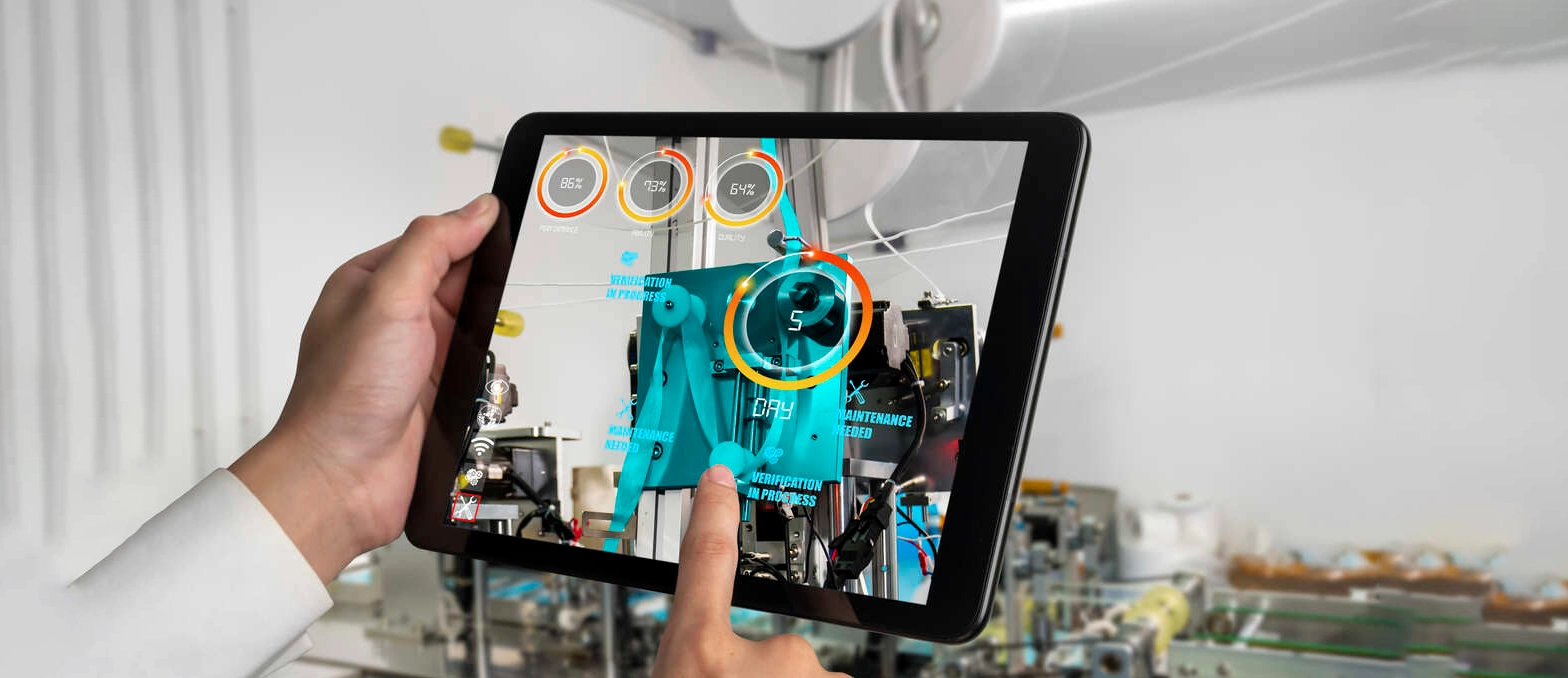A strong and extensive music library is vital for any music streaming app. An extensive catalog of songs across genres and eras attracts more users and keeps them engaged longer. However, building and maintaining a large music library poses unique challenges. This guide covers practical strategies for developing a strong library collection through effective content management. We will discuss topics like acquiring digital music library files, organizing files with metadata tags, managing common file formats, overcoming issues. Some of the common issues include licensing difficulties and incomplete data. Following these tips can help you construct a library catalog that satisfies users’ demands for access to the songs they love. A well-stocked, organized, and regularly updated music library forms the indispensable foundation for a successful music streaming service.
Table of Contents
What is content management?
Content management refers to the processes and tools used to organize, store and maintain content. It includes all digital information that businesses and organizations use, such as website pages, documents, images, videos, and more.
Effective content management ensures content is accurate, relevant, secure, and easily accessible to the right people. It aims to streamline the creation, review, approval, and delivery of content across different channels.
Content management systems provide a software platform to manage content throughout its lifecycle. They integrate tools for authoring, editing, approving, archiving, and publishing content. CMS features typically include version control, workflow automation, metadata management, and integration with web platforms.
The goals of content management are to maximize the value of content assets, keep content up-to-date, maintain brand and messaging consistency, and provide audiences with engaging experiences. It enables content to be repurposed for different uses and channels, avoiding duplication of effort.
Importance of a strong music library in Music streaming apps
A large and diverse music library is critically important for the success of any music streaming app. Users want access to as much of the music library they love as possible in one place. A limited catalog of songs or artists will drive users away quickly.
Having a wide range of music library from all genres and eras attracts the broadest audience and gives users the most value for their subscription fees. The more music library available, the more likely the app can satisfy each user’s unique listening preferences and discovery needs.
An up-to-date library that includes all the newest releases is also essential. Users want to listen to the latest albums and singles from their favorite artists as soon as they become available. Outdated libraries quickly become irrelevant.
Securing the rights to stream popular songs, especially current hits, gives Music streaming apps legitimacy and establishes them as comprehensive music library solutions. The biggest apps thrive by licensing catalogs from major record labels and music library publishers. Beyond quantity and popularity, a balanced library with depth across genres maintains long-term listener loyalty. Otherwise, certain genres or cultures may be underserved.
Role of content management in Music streaming apps
Content management plays an important role in the operations of Music streaming apps, especially in managing the large libraries of songs, artists, and albums available. Effective content management helps Music streaming apps:
- Organize vast music libraries – Content management systems organize music library content by attributes like genre, artist, album, and release date. This structure makes content easy to browse, search and discover.
- Maintain metadata – Data about each music library track like title, artist name, album info, lyrics, cover art, and more are stored and managed in the CMS. This metadata enables proper categorization and retrieval of content.
- Control access – The CMS controls which subscribers have access to what parts of the library based on their subscription type. Paid subscribers gain full access.
- Update content – New releases and updates to existing content are regularly integrated into the music library through the CMS. This keeps the library current.
- Manage workflows – Approval and publication workflows also ensure new or changed content meets quality standards before release.
- Support multiple channels – The same content managed in the CMS can be delivered to the streaming app, website, and other branded channels.
- Analyze usage – The CMS captures data on which songs and artists are most popular and frequently streamed. This informs content licensing and curation.
Though the music library itself is the main draw for users, a sophisticated content management system behind the scenes is needed to ingest, organize, secure, and distribute massive music libraries effectively. This unseen technology by a mobile app development company also plays a vital support role in the user experience of Music streaming apps.
Challenges in building and maintaining a music library
Music streaming services face many difficulties in developing and managing their massive libraries of songs. Some key challenges include:
- Licensing content is complex – Streaming services must negotiate licenses with record labels, music library publishers, and sometimes individual artists to legally obtain the rights to each song. This process can be lengthy and expensive.
- Catalogs are constantly changing – New songs, albums, and artists are constantly being added while others rotate out. The library also requires continuous updating to keep pace with the evolving music library industry.
- Metadata is often incomplete – Streaming services by music app developer must clean, correct, and supplement missing metadata for music library tracks to ensure proper organization, searchability, and compliance. This also costs time and resources.
- Audio files need encoding – Songs need to be transcoded into standardized formats and appropriate bitrates for streaming. This technical processing imposes an additional workload.
- Duplicate tracks must be detected – Systems that flag possible duplicates help reduce redundancy and utilize storage space more efficiently within the library. But such systems are not foolproof.
- Popularity is hard to predict – Services invest greatly in acquiring content but often struggle to predict which songs and artists will resonate with users and become favorites.
- Rights vary by region – Streaming services typically need separate licenses to play the same song in different countries due to the complexities of international music library rights. This multiplies the licensing burden.
Building and maintaining an extensive musical library that satisfies users’ content demands presents sizeable difficulties related to licensing, data management and the unpredictability of which songs will prove most valuable. Music library streaming services by music app developer devote substantial resources toward overcoming these challenges to continually grow and improve their libraries.
Tips on Building a Strong Music library
A strong library is crucial for any successful music streaming service. Here are some tips to help you build and maintain a large catalog of songs that attracts and retains users.
Choosing the Right Music streaming app
With so many Music streaming apps available, deciding which one is best for your needs can be challenging. Here are important factors to consider when choosing a music streaming app from the top mobile app development company:
- Music library – The size, breadth, and constant updating of the music library should be a top criterion. Also, check how many songs and albums are available across different genres and artists you listen to most.
- Audio quality – Higher audio quality like lossless or Hi-Res requires more data but provides a superior listening experience. You should also consider the different encoding options available.
- Playback features – Useful playback features include spatial audio, gapless playback, crossfade, equalizer settings, and playlist creation tools. Apps that allow you to customize your experience will be more enjoyable.
- Offline listening – The ability to download songs for listening offline is important for those who frequently lack an internet connection. You can also consider the number of songs that can be downloaded at once.
- Smart features – Features like song recommendations, lyrics display, automatic playlists and weekly discovery playlists enhance the app’s value. Only opt for smart features you will use.
- Subscription cost – Consider not just the standard subscription rate but also family plans and student discounts that may apply to you. Free trial periods allow you to test apps.
- User experience – Try out the app’s interface, browsing features, and search functionality. An intuitive design makes content easy to find and the app more pleasurable to use.
- Device compatibility – Check if the app is available for all your devices including smartphones, tablets, smart speakers, game console, smart TV, or car. The more ways you can access the app, the better.
- Customer service – Evaluate the different support options offered in case you encounter issues. User reviews can also reveal an app’s service reliability.
Setting Up Your Music library
One of the first and most important tasks for any music libraryian is organizing their music library. A well-structured and properly tagged library makes finding, browsing, and searching for specific tracks much easier.
Here are steps taken by mobile app developers when setting up music library:
Step 1– Begin by organizing your files into folders based on broad categories like genre, year, or artist. Group similar songs together to keep related music library easy to locate. Name folders clearly and consistently.
Step 2– Within these main folders, create subfolders based on more specific attributes as needed for easier navigation. For example, genre folders, have subfolders for each decade. This tiered structure keeps your library organized but still accessible.
Step 3– Tag all songs with relevant metadata like genre, tempo, key, mood, and instrumentation. Properly tagging tracks is also essential for filtering and searching your library efficiently later on.
Step 4– To create a music streaming app playlist, further categorize your music library. Make playlists for different vibes, activities, or moods you want to evoke. You can also make playlists of songs that use similar instruments or are in the same style or BPM range.
Step 5– Mobile app developers back up entire music library regularly to external hard drives or cloud storage to ensure your music library is always safely preserved. Make additional copies for added security.
Step 6– Periodically review your library to rename mislabeled files, ensure all metadata is accurate, consolidate repetitive or duplicate tracks, and update any broken file paths. Staying on top of organizational issues will also save time and frustration in the long run. Efficiency of these steps will increase if help of a music streaming app development company is taken in the development process.
Metadata and Tagging in the Music library
Metadata is data that describes other data – in this case, information that describes the songs in your music library. Proper metadata tagging allows you to organize, search and filter your music library collection efficiently.
Some important types of metadata for music library files in music streaming app development include:
- Title – The official or chosen title of the song.
- Artist – The name of the primary performer or creator of the song.
- Album – The name of the album the song appears on.
- Genre – The broad musical style category of the song.
- Year – The year the song or album was released.
- Key – The musical key that the song is written in.
- BPM – The beats per minute tempo of the song.
- Length – The exact duration of the song in minutes and seconds.
- Mood – A subjective descriptor of the vibe or feeling evoked by the song.
Music library File Formats
Music library files come in a variety of formats, each with its pros and cons for use in your library. The most common formats are:
- MP3: A compressed, lossy format for small file sizes but lowered audio quality. Most compatible.
- WAV: An uncompressed format with CD-quality audio but large file sizes.
- AIFF: Another uncompressed format with support for metadata tagging. Slightly compressed file sizes vs WAV.
- AAC: An efficient lossy format used in Apple’s iTunes and iCloud Music library. Offers good compression and quality.
- FLAC: A lossless compressed format supporting all audio data. High quality but larger files compared to MP3.
Consider the balance between audio quality, file size, compatibility, and metadata support when choosing a file format for your music library. Then organize your files consistently using that same format to minimize compatibility issues.
Adding Music to Your library
Purchasing digital downloads ensures high-quality files and metadata that you can easily import. Just drag and drop the files into your library folders.
Ripping audio CDs using software converts the physical disc into digital files you can tag and organize. Ensure all metadata is accurate before filing the ripped tracks.
Uploading streaming service playlists transfers tracks you’ve saved directly from the streaming app into your local library. Check for duplicate tracks afterward.
Receiving files via email or other transfers requires properly tagging the music library with metadata and naming the files consistently before placing them into your library system.
By taking the time to correctly incorporate new tracks into music streaming app development, you can avoid the work of fixing metadata errors and locating misplaced files at a later date. Proper file management from the beginning saves effort in the long run.
Collaborative Playlists and Social Sharing in Music library
Sharing your music library and collaborating on playlists with others expands your library and exposes you to recommendations. Connect your music library to streaming services to:
- Make playlists publicly shareable so friends and followers can listen. They may suggest adding songs you’ll enjoy.
- Save playlists created by others and add any tracks you like to your library.
- Directly collaborate on playlists with select people, taking turns adding and removing songs until you agree on the final track order.
- Post about new music library you’re enjoying to spark recommendations from your social connections. Others may share similar music library discovery anecdotes.
- Utilize the social features of music streaming app development services to grow your library through the suggestions and tastes of your online music library community. Their different perspectives provide fresh inspiration.
Regular Music library Maintenance
To keep your music library running smoothly, you must perform regular maintenance and upkeep tasks. These include:
- Backing up your entire library periodically to external hard drives or cloud storage. Make additional copies for added security.
- Removing duplicate and redundant tracks to minimize file bloat and storage usage.
- Updating file paths for any tracks that have been moved or renamed.
- Correcting inaccurate or incomplete metadata for proper library functionality.
- Moving used tracks into archive folders to keep your main library focused on frequently played music library.
- Consolidating multiple libraries into one organized system for increased ease of searching across your full collection.
Offline Listening and Syncing in Music library
For listening anywhere, you also need to make access available to your music library when offline. Your music streaming app development services should offer features to;
- Download songs and playlists from your online library to mobile devices for listening without an internet connection.
- Control how much storage space downloads use and the number of tracks that can be saved at once.
- Automatically download new tracks as you add them to playlists scheduled for offline syncing.
- Mark specific playlists, albums, or songs as available offline so they download the next time your device syncs.
- Sync your locally downloaded library back to the cloud service when you have an internet connection to update any changes.
- Remove downloaded tracks from your device as needed to free up storage space.
These offline syncing features ensure you always have access to the music library you want, even in areas without internet or data. They also help turn your online library into one that can truly be enjoyed anywhere.
Integrating External Music Libraries
Your music library collection likely extends beyond a single library or streaming service. With some work, you can consolidate external libraries into one central, organized system. Start by identifying all sources of music library you want to include – hard drives, cloud libraries, streaming playlists, ripped CDs, etc.
Make a plan for organizing all files and assigning consistent metadata tags across the combined library. Compare track lists to detect duplicates, then decide which version to keep for each duplicate song. Physically move or copy all music library files into the designated folders within your central library structure. Tag any new tracks with relevant metadata as they’re added. Test all file paths to ensure tracks are accessible and playable from their new locations within the unified library.
Curating Your Music library
An effective music library requires more than just accumulating files – it needs careful curation over time. Some curation practices to adopt include:
- Regularly reviewing your entire catalog for any redundant, obsolete, or rarely played tracks. Remove or archive unneeded files to declutter.
- Consolidating repetitive genres, artists, or styles to decrease redundancy and streamline your focused interests.
- Identifying gaps in your library where certain genres, eras, or moods are underrepresented. Make an effort to fill those gaps.
- Purposefully seeking out and acquiring new music library that inspires you or enriches your current collection in some way.
- Reorganizing your folders and playlists as your tastes and priorities evolve. Keep your library structured around your current interests.
- Cultivating an ongoing mindset of shaping and pruning your library into one that perfectly reflects your musical personality and needs.
Exploring Additional Features and Customizations in Music library
The basic functionality of organizing, tagging, and playing your music library files is just the starting point. Your library can offer much more with extra features and customizations:
- Install plugins and apps that integrate directly into your library to add capabilities like automatic tagging, song recommendations, key & tempo detection, and more.
- Connect your library to music streaming app development services for social sharing of playlists, access to an expanded catalog, and syncing across devices.
- Utilize visualizations, graphic equalizers, and audio effects to enhance the listening experience within your library’s player.
- Configure automatic actions and workflows within your library software like file conversions, metadata tagging, or playlist generation based on rules you define.
- Create custom views, filters, and smart playlists that dynamically surface the specific music library most relevant for you on demand.
- Leverage third-party apps that read your library’s data to generate valuable insights, analytics, and reports on your library and listening habits.
Conclusion
Building a strong on-demand music streaming app development through effective content management is key for any music streaming app. With a large, diverse, and well-organized catalog of songs that are constantly updated, your app can provide users with the music library they love and discover new favorites. By managing metadata, file formats, and content acquisition while overcoming challenges like licensing and incomplete data, you can develop a catalog that attracts and retains listeners. Integrating features like offline listening, playlists and recommendations further engage users. With consistent curation and customization that reflects the tastes of your audience, your music library can become the foundation for a successful music streaming app experience that keeps users coming back for more.
FAQs
How do music streaming services get content?
Music streaming services acquire content through licensing agreements with major record labels, music library publishers, and independent rights holders. They pay fees to these rights holders in exchange for the legal right to stream songs on their platforms for a certain period. Acquiring content this way allows streaming services to build massive catalogs of songs while complying with copyright laws. Licenses often vary by region, making the global content acquisition a complex process.
How do I create a music streaming app?
There are several major steps to create a music streaming app:
- Determine your requirements and target audience.
- Acquire the rights to stream music library from labels and publishers.
- Build the app’s infrastructure to store, organize and stream music library files.
- Design an intuitive interface for users.
- Integrate features like recommendations, playlists, and offline listening.
- Test the app thoroughly to ensure quality, reliability, and compliance.
- Market and promote the app.
- Continue to update and enhance the app based on user feedback and changing needs.
What are the key success factors in the music streaming industry?
Some key success factors for music streaming services are-
- Having a large and diverse music library catalog
- Continuous updates with new releases
- High-quality user experience and features
- Competitive pricing
- An intuitive and easy-to-use interface
- Reliable performance and uptime
- Effective personalization and recommendations
- Integration with other devices and platforms
- A strong brand reputation among music library listeners.
Staying attuned to shifting trends, listener preferences and new technologies also help services maintain relevance and growth in the competitive music streaming industry.
How can I improve my music library streaming?
There are several ways to improve your music library streaming experience. First, choose a service with a large and diverse music library catalog that suits your listening preferences. Then utilize features like recommendations, playlists, and streaming audio quality settings to personalize your experience. Familiarize yourself with app controls and settings to optimize performance. Connect supported devices to enable streaming anywhere. Provide feedback to the service to help shape future enhancements. And try out new streaming apps to compare features, interface, and value to find the overall best fit for you.






